This immersive journey leads into the craftsmanship, recent developments and local material culture behind the traditional Japanese paper Sekishu Washi. Based on our field research and book publication of the same name, “Washi Futurism” invites visitors to dive into its material cosmos.
Project partners:
Craft Portrait, Sekishu Washi Kubota, Nishita Washi Kobo, Sekishu Washi Kaikan, MONO Japan
With this exhibition, we emphasize the inspiring potential of the craft. For example, based on interviews with papermakers of Misumi (JP), we developed three speculative future scenarios that look ahead in time:
Will future generations preserve the craft at all cost? Or will the noticeable drive of younger artisans to open up bear exciting innovative fruits? Or might even big multinational companies learn from washi after all, adjusting their production to artisanal knowledge and natural cycles?

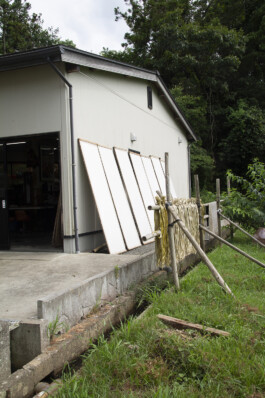
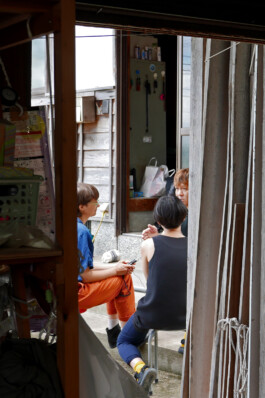

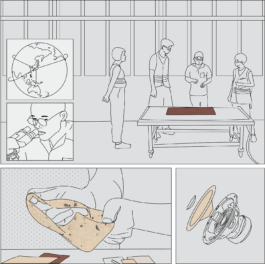
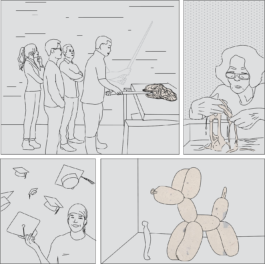
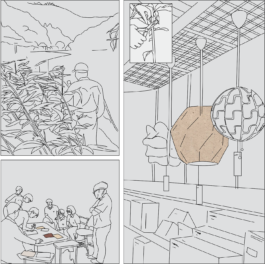
Scenario “Innovation Hub”: As workshops shift to research, they soon become sought-after consultants e.g. for regenerative fiber production.
Scenario “Craft Preservation”: Tradition is guarded per state certificate and paper is hence reserved for priceless works of art.
Scenario “Seasonal Design”: ancestral knowledge infuses global industries, fostering environmentally attuned practices and products.
The mise-en-scène of handmade paper in an industrial space like Nieuwe Instituut’s Gallery 3 was an inspiring challenge. We decided to emphasize this contrast through the materiality of the custom-made exhibition furniture.
Three future scenarios segment the first row and are brought to live by corresponding video testimonies. The visions get more palpable through material samples, microscopic views and interactive setups inviting people to explore the paper’s texture and pliability with their own hands.
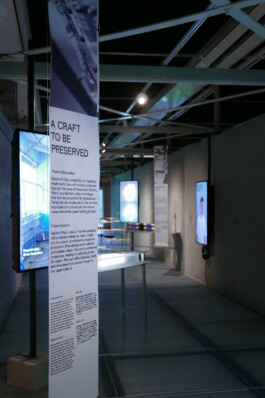
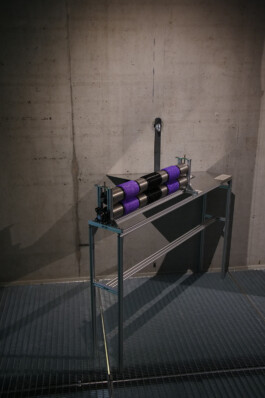
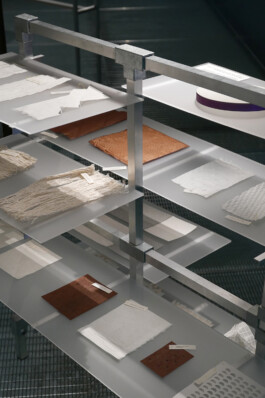
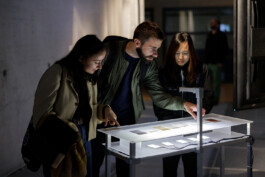
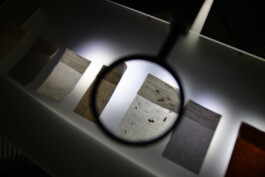
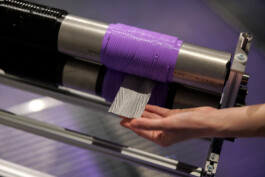
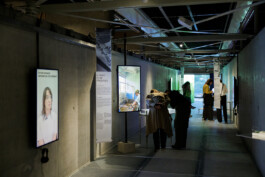
Five sheets of paper surrounded by custom-made LED light rings are suspended in a diagonal formation.
Working with choreographic light brings each sheet of washi to life, without moving them: Suddenly the front one lights up, and a shimmer flits along the row from one paper to the next, barely perceptible, an ephemeral flash. After this prelude the light continues to amplify characteristics like fibre structure of each type of paper. This spectacle is particularly visible for visitors walking down the aisle, immersing themselves in the washi cosmos.
(Pauline Agustoni, project partner)
The exhibition celebrated and shared this versatility with many. Over the three months roughly 1600 visitors saw it. The fact that ‘Washi Futurism’ formed a synergy with the events of MONO Japan fair and the Netherland’s preview of the cultural programme for the World Expo 2025 Osaka brought great visibility to the work. On these occasions, meaningful connections were fostered with individuals of diverse backgrounds (from the ambassador of Japan to the Netherlands to Dutch paper artists, to students).

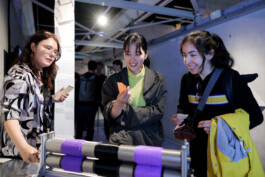
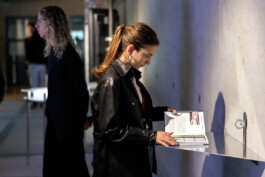
YEAR
2024
LOCATIONS
Nieuwe Instituut (NL)
DESIGN TEAM
Jonas Althaus, Martina Huynh, Satomi Minoshima, Pauline Agustoni, Saskia van der Meer, Tabitha Anderton (intern)
RESPONSIBILITIES
Concept, Design research, Multimedia Editing, Scenography, Exhibition production
COLLABORATORS
Sekishu Washi Kaikan, Nishita Washi Kobo, Sekishu Washi Kubota, MONO Japan
SUPPORTED BY
Creative Industries Fund NL, Embassy of the Kingdom of the Netherlands in Japan, CBK Rotterdam
PHOTOGRAPHER
Aad Hoogendoorn, Pauline Agustoni, Cream on Chrome
This immersive journey leads into the craftsmanship, recent developments and local material culture behind the traditional Japanese paper Sekishu Washi. Based on our field research and book publication of the same name, “Washi Futurism” invites visitors to dive into its material cosmos.
Project partners:
Craft Portrait, Sekishu Washi Kubota, Nishita Washi Kobo, Sekishu Washi Kaikan, MONO Japan
With this exhibition, we emphasize the inspiring potential of the craft. For example, based on interviews with papermakers of Misumi (JP), we developed three speculative future scenarios that look ahead in time:
Will future generations preserve the craft at all cost? Or will the noticeable drive of younger artisans to open up bear exciting innovative fruits? Or might even big multinational companies learn from washi after all, adjusting their production to artisanal knowledge and natural cycles?







Scenario “Innovation Hub”: As workshops shift to research, they soon become sought-after consultants e.g. for regenerative fiber production.
Scenario “Craft Preservation”: Tradition is guarded per state certificate and paper is hence reserved for priceless works of art.
Scenario “Seasonal Design”: ancestral knowledge infuses global industries, fostering environmentally attuned practices and products.
The mise-en-scène of handmade paper in an industrial space like Nieuwe Instituut’s Gallery 3 was an inspiring challenge. We decided to emphasize this contrast through the materiality of the custom-made exhibition furniture.
Three future scenarios segment the first row and are brought to live by corresponding video testimonies. The visions get more palpable through material samples, microscopic views and interactive setups inviting people to explore the paper’s texture and pliability with their own hands.







Five sheets of paper surrounded by custom-made LED light rings are suspended in a diagonal formation.
Working with choreographic light brings each sheet of washi to life, without moving them: Suddenly the front one lights up, and a shimmer flits along the row from one paper to the next, barely perceptible, an ephemeral flash. After this prelude the light continues to amplify characteristics like fibre structure of each type of paper. This spectacle is particularly visible for visitors walking down the aisle, immersing themselves in the washi cosmos.
(Pauline Agustoni, project partner)
The exhibition celebrated and shared this versatility with many. Over the three months roughly 1600 visitors saw it. The fact that ‘Washi Futurism’ formed a synergy with the events of MONO Japan fair and the Netherland’s preview of the cultural programme for the World Expo 2025 Osaka brought great visibility to the work. On these occasions, meaningful connections were fostered with individuals of diverse backgrounds (from the ambassador of Japan to the Netherlands to Dutch paper artists, to students).



PROJECT TYPE
Self Initiated
YEAR
2024
LOCATIONS
Nieuwe Instituut (NL)
DESIGN TEAM
Jonas Althaus, Martina Huynh, Satomi Minoshima, Pauline Agustoni, Saskia van der Meer, Tabitha Anderton (intern)
RESPONSIBILITIES
Concept, Design research, Multimedia Editing, Scenography, Exhibition production
COLLABORATORS
Sekishu Washi Kaikan, Nishita Washi Kobo, Sekishu Washi Kubota, MONO Japan
SUPPORTED BY
Creative Industries Fund NL, Embassy of the Kingdom of the Netherlands in Japan, CBK Rotterdam
PHOTOGRAPHER
Aad Hoogendoorn, Pauline Agustoni, Cream on Chrome